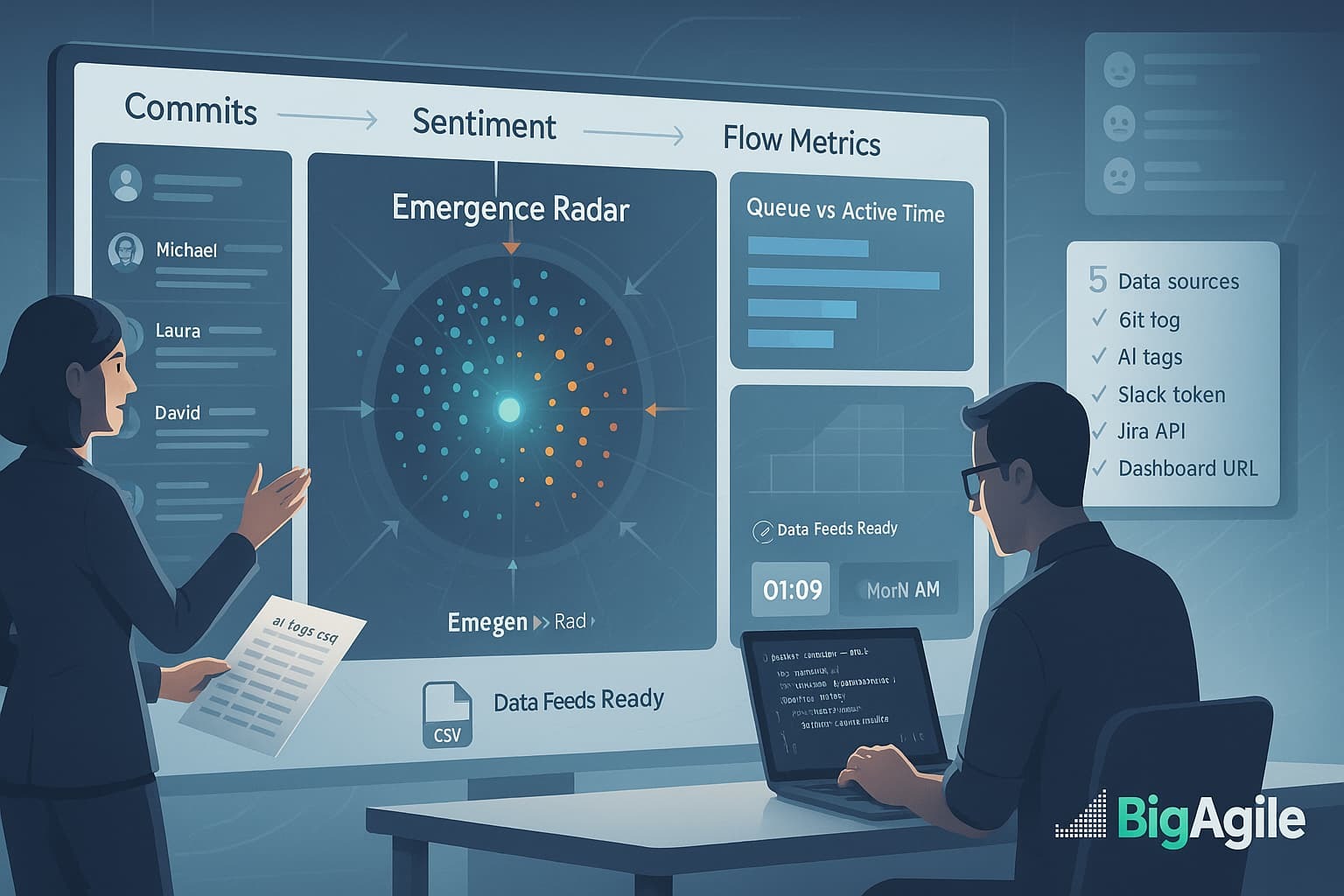
- Lighting Up Hidden Signals for a Week of Agile Insight
The Problem.
Even the best Agile teams rely on blind faith when they depend only on events and dashboards. Commit spikes, hidden technical debt, and shifts in team morale can lurk unnoticed between sprints, sometimes only revealing themselves when they’ve already disrupted priorities or caused burnout. By the time you spot a red flag or an upset Slack thread, fixing the issue becomes more costly, and panic in late cycles becomes the norm. We don't like that as coaches, do we?
The Agility.
True business agility isn’t about strict frameworks or perfect metrics; it’s about emerging awareness, the ability to detect weak signals as they appear and adapt before crises happen. Our Emergence Radar reflects this idea, combining code-commit clusters, human sentiment, and flow metrics into a dynamic map. When teams treat their product and people as interconnected systems, they don’t just run sprints; they grow with the market and one another.
The Scrum.
Today, you’ll prepare; no major implementation is yet underway, just a shared data feed. Connect your Git commit log, Slack sentiment tags, and Jira cycle-time exports to the Emergence Radar dashboard. Show your team a quick demo: how to glance at the radar before planning to identify where to explore first.
To kick off Monday with a bang, get these data feeds ready (or similar):
- Git Commit Logs: Grant read access (via HTTPS or SSH) to your primary repo. We’ll ingest the last 30 days of commits, including author, timestamp, and message.
- AI-Tag Enrichment: If you’re already tagging backlog items with theme/risk/effort (e.g. ai_tags.csv), have that CSV on hand; otherwise we’ll demonstrate how to auto-generate it with a simple prompt.
- Slack Sentiment Hooks: Create a slackbot token scoped to read message history in #dev, #standup, or your primary channels. We’ll pull emoji reactions and text snippets for basic mood analysis.
- Jira Cycle-Time API: Provision an API token with permissions for /rest/api/3/search and /rest/analytics/1.0/issue. Export issue keys and cycle-time phases (active vs queue).
- Central Dashboard: Spin up a blank Emergence Radar instance (we’ll share a Docker compose file) or prepare a whiteboard tool (Miro/Confluence) for Monday’s live demo.
With these connectors in place, Monday’s session becomes a live wiring demo: you’ll pipe raw data into the Emergence Radar, verify each feed, and see your first “radar dots” before lunch. No heavy scripting required, just credentials, CSVs, and a dashboard ready to illuminate.
The Outcome.
By the end of the week, you’ll have a unified view that reveals risk and opportunity in minutes, not days. Product managers gain real-time backlog insights, engineers identify where to focus, and leadership has a single view instead of juggling multiple reports. Early warnings replace crisis response, experiments replace guessing, and the team moves together, faster, safer, with less friction.
What Now?
This week’s Emergence Radar series will turn hidden noise into actionable signals. We start today by connecting the dots; over the next four days, we’ll teach you how to cluster, heatmap, sentiment-tag, and flow-integrate those dots into sprint routines.
Get ready to see your team, code, and process in a new light and catch problems before they escalate.
Join us for any of our upcoming workshops to get hands-on learning from one of the best!